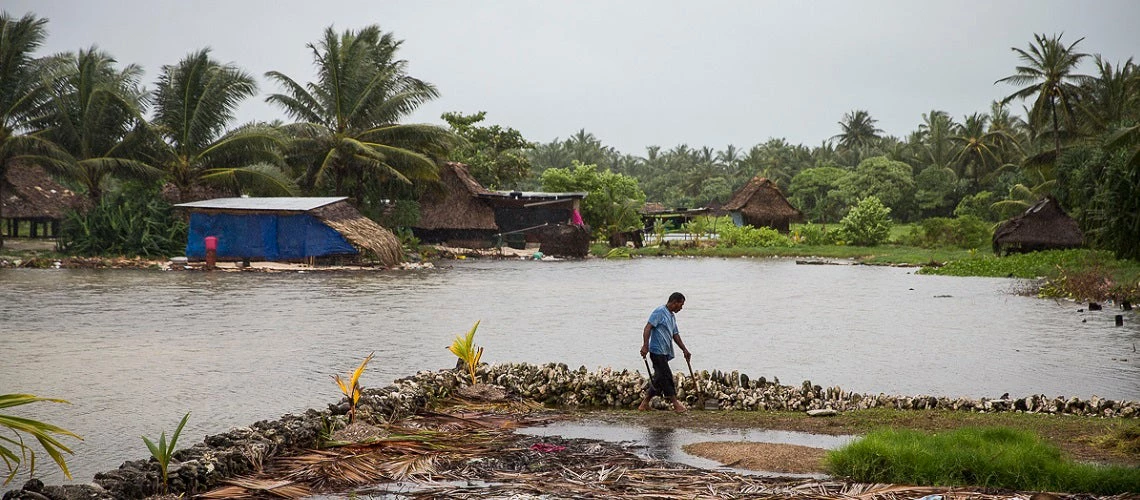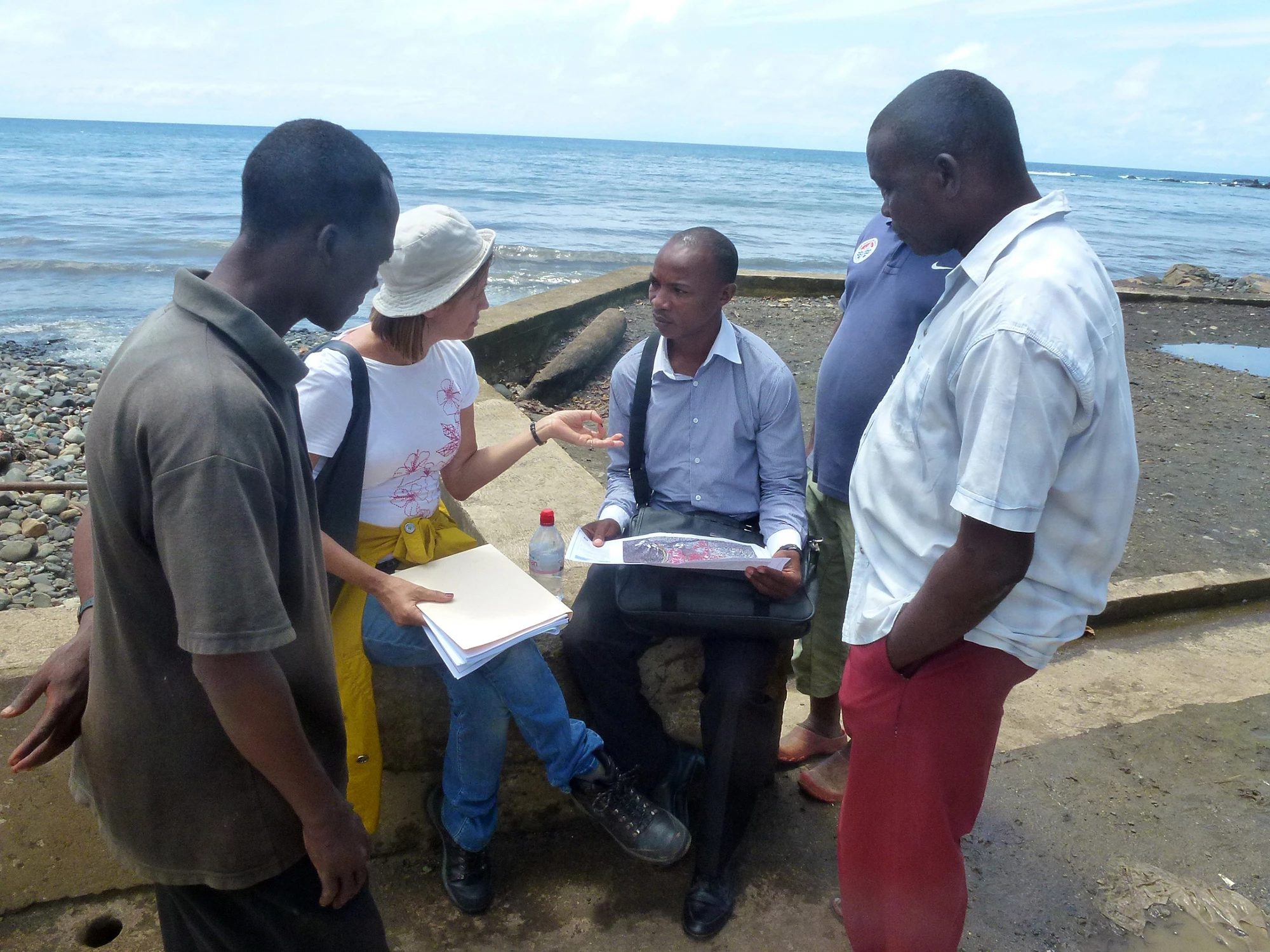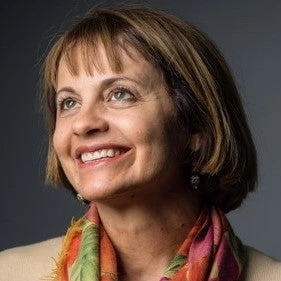 A man walks along an area partially flooded inside a sea wall in Bonriki, an area close to the airport on South Tarawa, Kiribati.
A man walks along an area partially flooded inside a sea wall in Bonriki, an area close to the airport on South Tarawa, Kiribati.
This fiscal year, the World Bank Group’s first-of-its-kind Action Plan on Climate Change Adaptation and Resilience comes into effect. This interview is part of a series reflecting on our work supporting countries to adapt and build resilience to a changing climate, focusing on early efforts, current projects and future innovations that aim to protect communities around the world.
Hear from Sofia Bettencourt, former Lead Adaptation Specialist for the Global Facility for Disaster Reduction and Recovery, whose work has spanned participatory planning, institutional development, adaptation mainstreaming and coastal adaptation issues.
1. As a pioneer on adaptation and resilience at the Bank, what led you to the realization that you needed to include resilience thinking and approaches in your work? What motivated you to keep going?
For me, it all started in 1999. I was working with Pacific Island Countries, and the Country Director (Klaus Rohland, a man with tremendous vision) wanted the 2000 Regional Economic Report to focus on the major challenges facing the islands: urbanization, the oceans, and adaptation to climate change. We called it “Cities, Seas and Storms: Managing Change in Pacific Island Economies.” I ended up working with a team of international experts from 24 different institutions, doing an impact study on Kiribati and Fiji. In the process, I learned a great amount about climate change impacts and adaptation options in small islands.
Visiting Kiribati really shook me to the core: here was a country with an ocean the size of the US, but with very narrow atolls rising only 3 meters above sea level. The fragility and vulnerability under which the I-Kiribati lived was astonishing, yet they were also strongly resilient. I met a man, for example, who had built 8 meters of new reclaimed land against the lagoon, and now was planting vegetables there. I became convinced that adaptation was possible, even in places that most people believed would be underwater in a few years.
It also became clear that to be effective, adaptation had to shift from “something that Ministries of Environment talk about” to a priority in national development planning.
I decided to start an adaptation program in Kiribati, supported by (then) pilot funds from the Japanese Government and Global Environmental Facility. Once we cracked the funding challenge, the momentum just kept growing around adaptation and resilience at the Bank. I never looked back, and from then on, even though I worked on other types of projects, I always went back to my passion for adaptation and resilience.
2. Are there aha-moments in your work on resilience where you felt what you were doing led to results or some significant insights and influenced others? Could you describe them?
Yes, I can think of an example from an adaptation project in São Tomé and Príncipe in the early 2010s. We were working with fishing villages that had lost their houses to coastal erosion and wanted help to move further inland. I was very reluctant to support population relocation at that time because of the complexity of resettlement. One day, I went to a village in Malanza and saw an old handicapped widow, Dona Ana, living in a half-destroyed shack barely 10 meters from the shore. She was one of the people who lived in constant fear of being dragged out to sea and had asked for help to relocate. It dawned on me that we had no right to only choose easy adaptation options. Population relocation was essential to those people, and we had to tackle it no matter how complex. We then worked with our great social safeguards’ expert, Paivi Koskinen-Lewis, to incorporate voluntary relocation into the project. Dona Ana was eventually moved by the government to a safer house, and when I next saw her, she was smiling at us through the door.
3. What advice would you have for project staff working to integrate adaptation approaches, resilience thinking and climate risk management in their work?
First, think long-term. It took us many years to build resilience programs in Kiribati, Zambia, or São Tomé and Príncipe, but once there is a solid institutional basis, the programs bloom on their own, led by many different champions. A major problem with adaptation and resilience is that impacts are often not visible within a single project timeframe, and there is a risk that new management will decide to end follow-up operations. Over the years, I learned that the best way to manage this risk is to ensure that the original project appraisal document mentions that the investment is the start of a long-term, multi-phase program (15-20 years), as agreed with the government. Even if the funding for follow-up phases is not guaranteed, management tends to be much more reluctant to cut them if they are mentioned on previous official documents!
Second, invest in new champions, both at the country level as well as in the Bank. Look for young promising talent, with a spark in their eyes, and mentor them to become the future leaders of your program – both in-country as well as in the Bank. In 2008, after three major cyclones caused extensive damage to irrigation systems and roads in Madagascar, we realized that Madagascar had no trained engineers in hydraulics and disaster risk management. We sent a young government officer to undertake graduate studies in Delft; he returned to lead the development of transport resilience norms in Madagascar.
Finally, be curious and learn from experts. Make it a priority to read new publications (even if just an executive summary) and assume that a lot of innovation happens outside the Bank. Google evaluation results and get a small trust fund to engage external experts, pilot a new approach, or do some cross support to learn from others’ experiences.
4. What are your thoughts on climate adaptation and resilience in our current reality of the pandemic, and on what can be prioritized post-COVID?
Interestingly enough, the way people deal with COVID is similar to the way people deal with adaptation and resilience. People assess the risk - of future disasters, of climate impacts, of COVID - and act accordingly, and the longer or more removed they are from the impacts, the more lax they become in their planning. We need to remember that this particular pandemic will eventually go away, but other pandemics will come. And climate change will be with us for decades. The experience so far suggests that we need to invest in stronger governance, social safety nets, and more sustainable, resilient development, with built-in mechanisms to manage uncertainty and risk.



Join the Conversation